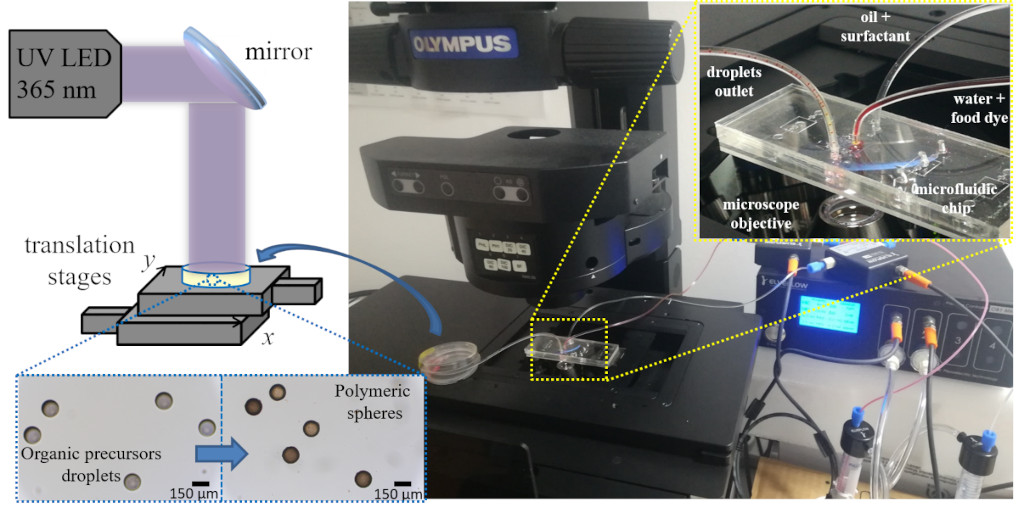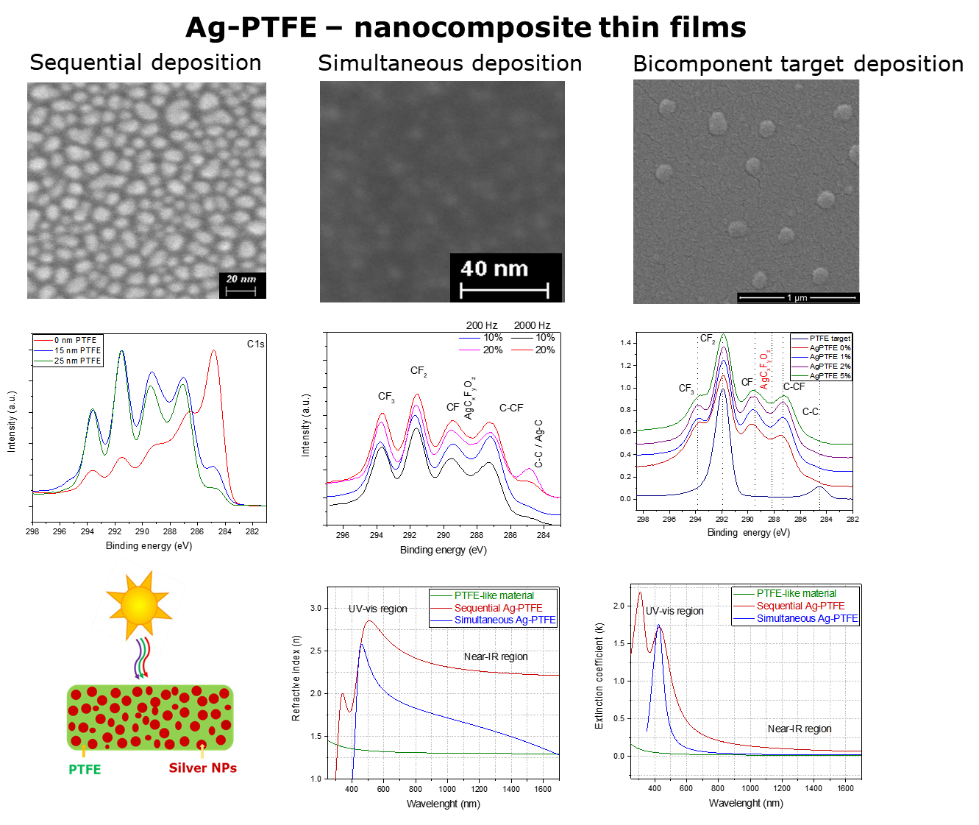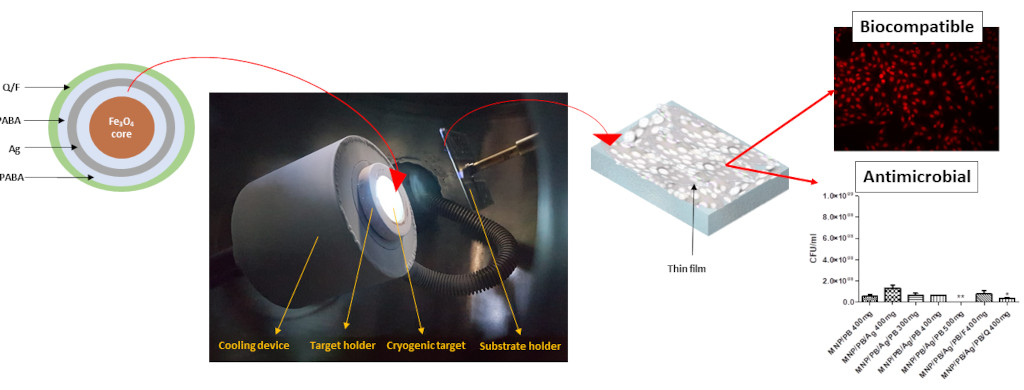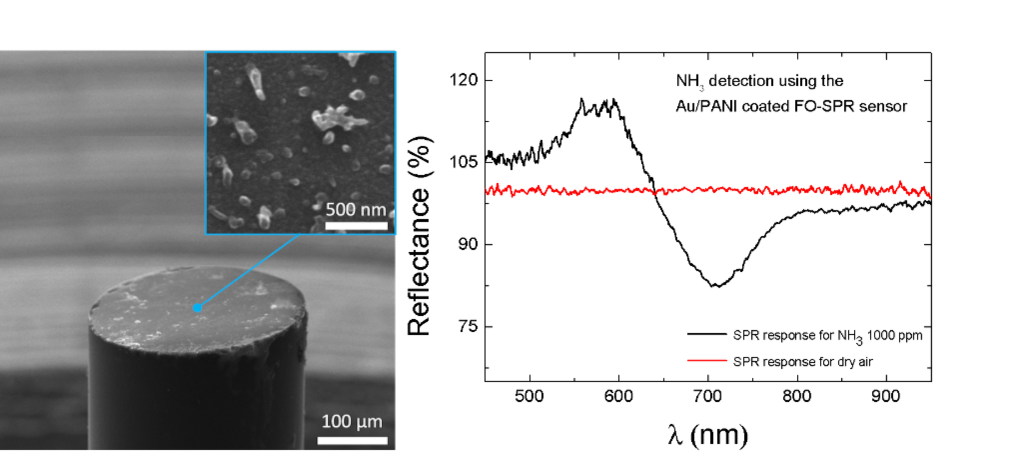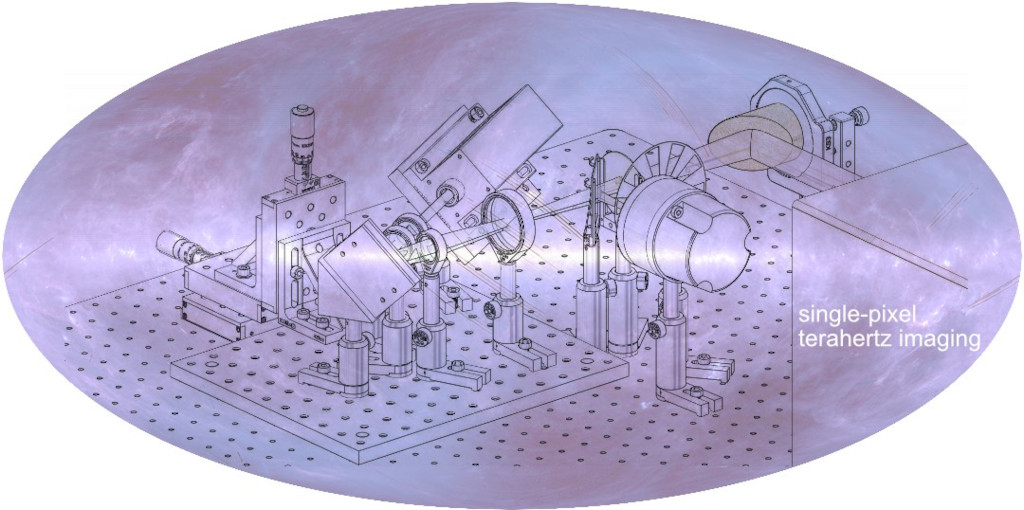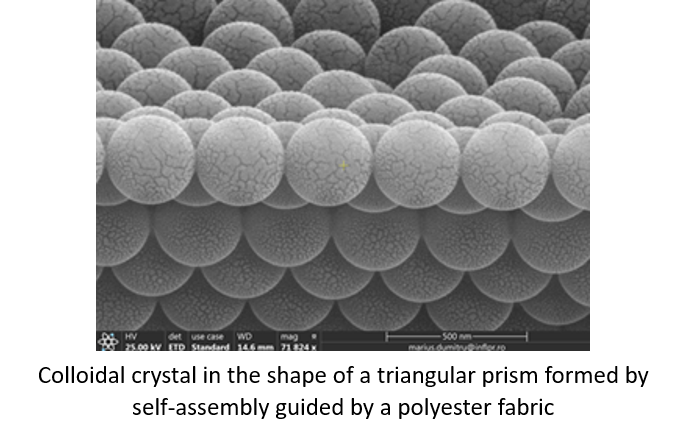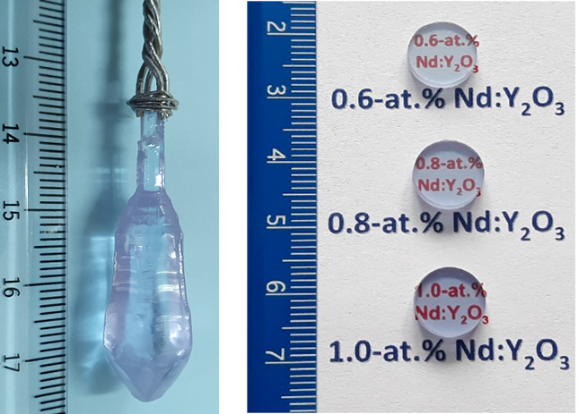
Etape II și III
Phase no. 78b1
Responsible: Dr. E. Axente
Deadline: 10.12.2021
Title: "Generarea controlata de nanopicaturi in dispozitive microfluidice pentru captare unicelulara (PARTIAL ETAPA II, III)"
Abstract: In this project, we have fabricated, characterized and tested the functionality of an innovative platform for the controlled generation of monodispersed droplets, with small volumes (<nL), inside microfluidic devices. We have briefly decribed the theoretical aspects of droplets formation and introduced our biochips microfabrication technologies of both hybride PDMS/glass and Foturan glass biochips by laser techniques. Biochips were further assembled and connected to the perfusion system, and then specific flow configurations for droplets generation were investigated. We have obtained droplets with diameters of 40, 80 and 120 µm respectively, that correspond to very low volumes of 34 , 268, and 905 pL, respectively. We demonstrated that both the dimensions and the droplets generation rates could be easily tailored by appropriate adjustment of preasures and flow rates (for fixed viscosities of the fluids). We have introduced the main applications of droplets-based microfluidics, and detailed distinct examples on materials synthesis and single-cell trapping and analyses within droplets for biomedical applications. He have demonstrated the possibility to fabricate polymeric spheres with 150 µm diameters, by generating droplets containing organic precursors (chitosan, phloroglucinol, glycoxilic acid), followed by UV LED irradiation at 365 nm.
Graphic abstract:
Phase no. 86
Responsible: Dr. T. Acsente
Deadline: 10.12.2021
Title: "Obtinerea de nanoparticule de compusi metalici (oxizi, nitruri) pe baza metodei MSGA (pulverizare magnetron si agregare in flux de gaz si caracterizarea lor)"
Abstract: During the past years, we implemented in INFLPR (Low Temperature Plasma Laboratory, Plasma Processes, Materials and Surfaces Group) an experimental system for the production of W nanoparticles using a cluster source based on a plasma method: condensation in an inert gas flow of the metallic vapours obtained by magnetron sputtering (MSGA). The studies carried out in the present stage of the project have highlighted a new way of the MSGA cluster source operation. Thus, under specific experimental conditions, the plasma expands outside the MSGA source through the outlet opening, surrounding the nanoparticles during their flight toward the substrate. The MSGA-JET mode observed by our group is an absolute novelty in the scientific community studying the production of nanoparticles by gas aggregation methods. It should be noted that the same cluster source can be operated in both classic and jet modes, the transition between them being obtained by properly adjusting the axial position of the magnetron. In this stage, we highlighted the fact that both operating modes are useful for the synthesis of the metallic nanoparticles, but only the MSGA-JET mode is useful in changing their chemical composition, resulting in core-shell nanoparticles (metal/metal compound ones). This is done by injecting a reactive gas (N2, O2, C2H2) into the plasma jet. Also, the plasma jet can be used with substrates sensitive to thermal damage (paper, polymers). These aspects suggest that the MSGA-JET mode has potential for the development of devices (sensors, etc.) based on core-shell nanoparticles.
Graphic abstract:
Phase no. 87
Responsible: Dr. B. Mitu
Deadline: 10.12.2021
Title: "Obținerea de materiale nanocompozite pe bază de matrici polimerice cu proprietăți de compoziție și de suprafață controlate"
Abstract: In this stage of the project, nanocomposite thin films based on silver and polytetrafluoroethylene were synthesized by magnetron sputtering deposition by using sequential and simultaneous exposurte of the sputtering species to the substrate and multicomponent targets, respectively. All the obtained nanocomposites were characterized primarily in terms of compositional and morphological properties, highlighting the experimental possibilities of controlling the chemistry and topography of the surface. The materials evidenced the formation of a complex bond at the interface between the silver nanoparticles and the polymeric matrix, evidenced in the high resolution X-ray Photoelectron Spectroscopy spectra of C1s binding energy region at an energy of 369.4 eV, and associated with the AgCxFyOz bond (x> 2, y <3). This is more pronounced as the amount of Ag in the material is higher, and is formed both in the gas phase in the case of simultaneous deposition of two targets, or two-component targets, and on the substrate surface, in the case of sequential deposition. The obtained materials evidence surface plasmonic resonance effect, due to the presence of NP of Ag in the material, as identified upon determination of optical constants following spectroelipsometric measurements, and much higher refractive index compared to the polymeric matrix used.
Graphic abstract:
Phase no. 88
Responsible: Dr. R. Cristescu
Deadline: 10.12.2021
Title: "Caracterizarea filmelor subtiri de materiale compozite nanostructurate si functionalizate bazate pe nanoparticule magnetice multifunctionale de tip „core-shell” obtinute prin MAPLE prin metode complementare de investigare morfologica"
Abstract: We report on the fabrication of two types of Fe3O4 / para-aminobenzoic acid core-shell nanoparticles covered with a secondary intermediate silver layer. The final organic shells were built by phthalocyanine and flavonoid type compounds, respectively. High quality thin films of the final assembled core-shell nanomaterials have been obtained by MAPLE (matrix-assisted pulsed laser evaporation), on silicon and optical glass substrates. The MAPLE-deposited thin coatings have been characterized by SEM, and AFM. The core-shell magnetic nanoparticles and obtained thin films have been investigated in vitro for their microbicidal (minimal inhibitory concentration assay) and anti-biofilm (microtiter assay of the minimal biofilm eradication concentration) properties on a large panel of bacterial and fungal strains, as well as for their influence on the mammalian cells morphology, viability and proliferation. Our results revealed that the multifunctional nanostructures proved antimicrobial activities and a good biocompatibility. Therefore, the obtained thin films could be further used for the development of novel bioactive materials, with antimicrobial properties, that could be useful for a wide range of applications, in the prevention, control or eradication of the initial adherence and further formation of microbial biofilms, frequently involved in the microbial contamination of different media and products, as well as in the etiology of chronic and hard to treat infections.
Graphic abstract:
Phase no. 89
Responsible: Dr. I. Antohe
Deadline: 10.12.2021
Title: "Utilizarea senzorului cu fibră optică bazat pe rezonanță plasmonică de suprafață (FO-SPR) pentru detecție de gaze"
Abstract: The demand of ammonia (NH3) sensing systems is increasing because of its high toxicity even in small concentrations. Moreover, NH3 sensors have a wide range of applications in agricultural, industrial, and biological sectors such as in the production of fertilizers, explosives, textiles, plastics and food processing. Therefore, the development of reversabile and highly sensitive NH3 sensor is required.
In this context, for the 3rd phase of the project, both a conductometric and a fiber –optic surface plasmon resonance (FO-SPR) NH3 gas sensors has been designed and fabricated using polyaniline (PANI) as sensing element. The PANi electro-conductive polumer has been proven to be an advantageous material for producing gas sensing devices, having very good sensitivity and short response times. The planar chemiresistive sensor was fabricated by coating an alumina substrate with a gold film using a magnetron sputtering technique and an in-house fabricated shadow mask, while the conductive PANI layer was synthetized using chemical oxidative polymerization method. The FO-SPR sensor was developed by synthesizing the PANI layer over a gold thin film using the same synthesis approach. The elemental composition and morphology of PANI layer were carried out using X-ray Photoelectron Spectroscopy (XPS) and Scanning Electrom Microscopy (SEM), respectivly.
The detection of NH3 gas has been carried out at room temperature and using an in-house built setup for testing gas sensors. The proposed sensor configurations are highly sensitive for NH3 gas, have small responses, as well as good recovery times.
Graphic abstract:
Phase no. 90
Responsible: Dr. F. Garoi
Deadline: 10.12.2021
Title: "Studii privind caracterizarea fasciculelor laser cu emisie in domeniul THz"
Abstract: The frequency region between microwave and infrared part of the spectrum, called terahertz (THz), encompasses electromagnetic waves oscillating at frequencies, loosely defined, in the range 0.1 to 30 THz. Generating or detecting radiation in this range has proved quite challenging, owing mainly to the presence of background sources of incoherent light. Nevertheless, this radiation has unique properties that makes it particularly attractive for applications ranging from bio-medical imaging, national security and packaged goods inspection to remote sensing and spectroscopy. Today, the most accessible technique for recording or measuring data in this spectral range, except time-domain spectroscopy/imaging, is the single-pixel imaging (SPI). In this view, a given THz scene may be achieved either by using raster scanning (RS) or multiplexing (MS) techniques. Thus, through this study, we intend to use both RS and MS to obtain images at submillimeter radiation and to demonstrate applications such as Fourier transform spectroscopy (FTS) and phase shifting interferometry (PSI). This is because both FTS and PSI are readily applicable to SPI and interferometry is a reliable and non-invasive testing tool.
Graphic abstract:
Phase no. 91
Responsible: Dr. I. Sandu
Deadline: 10.12.2021
Title: "Meta-retele senzoristice și fotonice pe bază de nanoparticule, fabricate prin autoasamblare"
Abstract: By using a polyester fabric to guide the self-assembly phenomenon of some sub-micron spheres of polyethylene or silica or of some micron spheres of polystyrene, patterned colloidal crystals (Metanets) can be constructed, characterized by different shapes in the the third dimension compared to the directions parallel to the substrate. The shape of the pattern is given by the architecture of the fabric thus, grids composed of fcc packed spheres can be obtained. Each unit cell of the Metanet has walls in the shape of a triangular prism that has a single row of spheres on the upper edge. The inside of each cell consists of a monolayer of spheres. The metanets show a negative refractive index, a left handed behavior of transmitted light, and the superprism effect. They can also be formed on curved substrates. The Metanets can be used as lithographic masks for Natural Lithography resulting in ordered nanometric structures with shading effect. They can also be used as molds for the synthesis of inverse-opal metanets with walls structured in the third dimension. Metanets of large polystyrene spheres (20 micrometers) can be infiltrated with nanoparticles or polymer / nanoparticle composites and calcined to obtain nanoparticle-based metanets for to be use in Biology or Medicine as 3D hierarchical tissue scaffolds.
Graphic abstract:
Phase no. 92
Responsible: Dr. L. Gheorghe
Deadline: 10.12.2021
Title: "Dezvoltarea de cristale Nd:LYSB pentru emisie laser eficienta in domeniul spectral 1 µm. Medii ceramice de tip sesquioxide dopate cu ioni de pamanturi rare pentru infrarosul apropiat"
Abstract: A. A high-quality 3.5 at.% Nd:LYSB laser crystal with nearly congruent melting was grown by the Czochralski method. A special thermal assembly was used, and the composition of the melt, the growth direction, as well as the pulling and rotating rates were optimized. Efficient continuous-wave (CW) laser emission at 1062 nm was obtained under the pump at 807 nm with a fiber-coupled laser diode. The Nd:LYSB crystal delivered the highest output power of 2.20 W for 4.20 W of absorbed pump power, operating with a high slope efficiency of ηsa= 0.59 (with respect to the absorbed pump power).
B. In Romania, polycrystalline x-at.% Nd:Y2O3 (x = 0.6, 0.8, and 1.0) transparent ceramics were obtained for the first time by solid-state reaction and vacuum sintering method. Structural, morphological and optical investigations confirm their potential as a laser gain media for NIR laser emission at 1.08 µm.
Graphic abstract:

